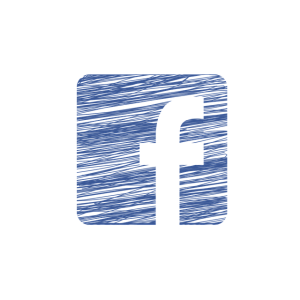As HR teams around the world continue to adapt to the new normal, establishing an exceptional employee experience has never been more important — or more difficult. Thankfully, ever-advancing HR tech is up to the task. From keeping employees engaged no matter where they’re located to driving performance using AI and data analytics, here are 5 of the key HR technology trends your organization needs to keep up with in 2021.
1. Elevate the employee experience with self-service tools
Self-service tools empower all your team members, from staff to managers to executives, with capabilities that were formerly the sole domain of HR. For instance, an employee portal lets your workforce access tax information and documents, enroll in health plans, and view pay stubs. But this is just the tip of the iceberg.
The true impact of self-service tools — and the reason they’re a major HR technology trend — comes from involving everyone in a culture of recognition, establishing always-on lines of communication with employees, and giving managers access to the data they need to act on employee feedback. With training from HR and an intuitive user interface, employees quickly make these platforms part of their routine and enjoy engaging with them on a daily basis.
Show appreciation with a recognition platform
Recognized employees are motivated employees, but providing the occasional years-of-service award or branded swag won’t make an impact. Realizing the full benefits of recognition means getting everyone involved in showing appreciation frequently. Organizations that provide frequent recognition are 41% more likely to see improved employee retention and 34% more likely to see improved employee engagement.
Your organization needs to make recognition easy, which is why so many have adopted a comprehensive reward and recognition (R&R) platform. Cutting-edge R&R platforms combine both social and monetary recognition features in a single platform that can be accessed from anywhere, thanks to robust mobile capabilities. With the click of a button, team members can send customized messages of recognition to anyone at your organization. Your team members can even include reward points with every message of recognition, and the recipients can then redeem them for rewards of their choosing. This streamlines the reward process and ensures that every reward is personalized and meaningful.
These tools make the recognition experience engaging by allowing employees to like and comment on other messages, turning appreciation into a fun, communal experience. Those who use Achievers Recognize — a comprehensive recognition solution — were 107% more likely to give their culture of recognition a high rating than organizations that don’t use recognition technology.
The self-service aspect of R&R platforms is the key to getting the most out of recognition. When team members show appreciation on a regular basis, its impact increases exponentially. And when you recognize employees in real time, clearly linking recognition to a specific action, your team members are more likely to take that action again. R&R platforms make it easy for team members to engage in these best practices. They’re a truly revolutionary tool for transforming organizational culture and boosting the employee experience.
Listen to your workforce with an employee engagement solution
Employees want their voices heard, no matter whether they’re in-office or working remotely. But employees can’t express what they truly feel over chat or email, as these channels don’t offer anonymity. And even if they do, managers and HR will lack the guidance on how to effectively respond to this feedback quickly, so employees will only be demoralized by what they perceive as a lack of action. Your organization must provide every team member with the ability to send confidential feedback at any time, and it must give management the tools it needs to rapidly analyze and take effective action on feedback.
Employee engagement platforms meet this need. They offer everything required to keep the feedback loop going, starting with pulse surveys — relatively short questionnaires that focus on specific engagement factors. Pulse surveys take far less time to complete than a traditional annual survey, boosting participation rates. And you can use them to survey your employees frequently, keeping tabs on engagement in real time.
When employees have important feedback in-between pulse surveys — or regarding something your pulse surveys haven’t addressed — the best engagement platforms provide a self-service, always-on feedback channel, thanks to the power of AI. With an intelligent HR chatbot that learns by interacting with employees, checks in with them, and lets them reach out anonymously at any time, you’ll always know what your workforce is thinking. You’ll discover cultural dynamics that were previously hidden, and you’ll be able to tell whether your HR initiatives are having the desired result over time.
These self-service capabilities extend to the analytics side as well. Managers need to be the ones to act on their team’s feedback — after all, they have the greatest control over the day-to-day experience of their direct reports. A comprehensive employee engagement solution includes robust analytics tools like customized reports and heatmaps. These make it easy to identify trends, find out where your organization or team is underperforming, and see where its strengths lie. Employee engagement platforms can even guide managers through to a meeting with their team, where they can present their findings and build a collaborative action plan that everyone buys into.
2. Analyze data to drive performance
HR now has the technology to collect more data than ever before — and that can be a problem. With information on everything from recruitment to performance, separating the signal from the noise isn’t always easy. You need to identify the metrics that truly matter to your organization and then track and improve them.
First, consider the major areas you want to prioritize to improve business performance. These may include engagement and recognition, as discussed above, as well as recruitment, retention, training, and revenue. Then work with relevant stakeholders — from employees on the front lines to managers and executives — to collaboratively come up with key performance indicators (KPIs) that are meaningful to everyone. These KPIs can range from measures of individual performance, like how many goals of different types were met by each employee, to organization-wide indicators, like monthly activity on your recognition platform.
It’s not feasible for HR to sort through this data manually when they have many other pressing responsibilities. Look for tools that respect your time with automated data collection and easy-to-use analytics features, like dashboards and customizable reports. And if possible, integrate your tech in a single platform, so you can access all your organization’s data and key insights in one place.
3. Lean into our remote work reality
The transition to remote work isn’t slowing down. Remote employees have more flexibility in how, when, and where they work, and remote organizations enjoy reduced overhead and the ability to recruit without geographic restrictions. But remote work also comes with challenges — communicating effectively, collaborating with other team members, and feeling isolated from the organization and its culture.
HR can help remote team members remain connected and productive, with the right technology. You should first ensure you’ve provided all team members with software that enables and streamlines digital communication. This includes tools like Microsoft Teams, Google Chat, and Zoom that let employees connect face-to-face at the click of a button, as well as intuitive chat tools like Slack. Video call platforms are also a must for remote interviewing and onboarding.
HR technology for remote work doesn’t end with communication tools. Out-of-office collaboration requires a project management platform that gives all team members visibility into where projects stand at any given time. The notification and commenting capabilities that come with project management software also make remote teamwork much smoother. Employee portals, as touched on above, are another great tool for your remote workforce. They let team members handle complicated administrative tasks virtually without having to engage in lengthy email or chat sessions with HR.
4. Use software to encourage employee wellness
The unfortunate truth is that employees are suffering from more stress than ever before. That’s why organizations need to prioritize supporting employee wellness. Educating employees on key ways to improve both mental and physical health, like practicing mindfulness and staying fit, together with providing the resources and support to prevent burnout, is a great place to start. But the best organizations leverage HR technology to boost their efforts using an employee wellness platform.
Look for a platform that takes a holistic approach to addressing employee wellness, as emotional and physical health are inextricably linked. It should offer health assessments that help employees understand where they’re at, make tracking progress towards wellness goals easy, and reward employees for clearing personal wellness challenges. The latter is easily automated by selecting a wellness platform that integrates with your R&R solution. Rather than giving employees rewards that you have to select yourself and may not mean much to them, your workforce can earn points by achieving wellness goals and then redeem those points for whatever they prefer from a fully-stocked digital marketplace.
5. Support continuous learning and development
Investing in your employees is a win-win for them and your company. Your team members can pursue their professional interests and grow in their careers while your organization reaps the rewards of a more skilled workforce. With advancements in HR technology, fostering professional development throughout the entire employee life cycle is easier than ever.
The options for using technology to assist employee learning are almost limitless, from gamification to eLearning to virtual reality. Using a learning management system, or LMS, that enables individualized training for all team members is a great start. An LMS lets you make self-created or third party courses available through a mobile-friendly platform, so team members can complete lessons both on and off the job. Look for an LMS that provides monitoring and reporting features for tracking learners’ progress and ensuring your organization is meeting its development goals.
Start leveraging Achievers’ HR technology today with a free demo.
Business & Finance Articles on Business 2 Community
(87)






